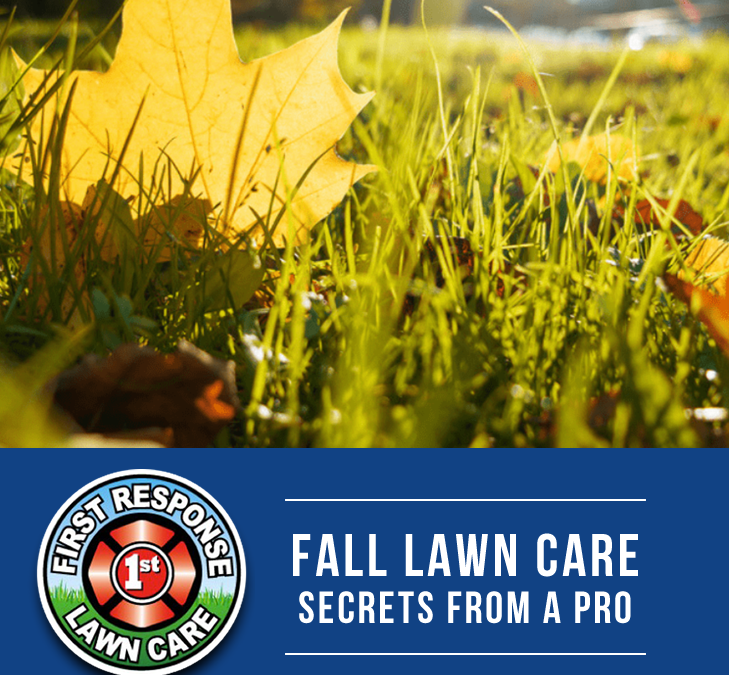
by admin | Nov 15, 2020 | Winterizing Your Lawn
Take advantage of cool fall weather to fertilize, control weeds, and improve the health and appearance of your yard. A little work now will pave the way for a lush, green carpet when temperatures warm up again in spring.
If a summer drought persists into autumn, considered watering your turf deeply a couple of times before freezing weather sets in. A couple of deep soaks, moistening the soil several inches, before the soil freezes helps the lawn transition to winter. Frequently the fall weather pattern will change and nature will provide the moisture for you. If you have to water, do so in the morning, when the winds are lighter, limiting evaporation.
If you are interested in a sprinkler system, we are a licensed lawn sprinkler company dedicated to creating the most efficient irrigation system for a healthy lawn. If you have an existing irrigation system, now is a great time for a service call to prepare for winter weather.
Fall is the best time to fertilize if you’ve overseeded your lawn with a cool season grass like ryegrass. It helps your lawn green up earlier and look better in spring.
Avoid fertilizing dormant warm-season grasses.
Creating a healthy, lush lawn is the best way to choke out those weeds. Focus on adding fertilizer to provide essential nutrients when needed. Smaller weeds usually will get shaded out when your lawn is in top shape. For larger weeds, call us for expert pre emergent lawn treatment.
Aeration improves drainage, reduces thatch, and loosens soil. Core aerators are the preferred type of aerators. They remove plugs of soil, or cores, breaking up thatch and improving soil structure. The cores are left on top of the turf and slowly break up depending on rain, mowing, and traffic on the turf. Aerate cool-season grasses in early fall and warm-season grasses in spring. First Response Lawn Care provides aeration services.
Early fall is an ideal time to reseed dead or thin patches in cool-season lawns. If you seed in autumn, you’ll have fewer weeds to deal with next year. And the seedlings will become established before stressful hot weather conditions arrive. A mulch product embedded with seed and fertilizer is a convenient way to fill the gaps. Be sure to prepare the soil bed with a rake before seeding and encourage quick germination by watering new seed regularly for a couple of weeks after application.
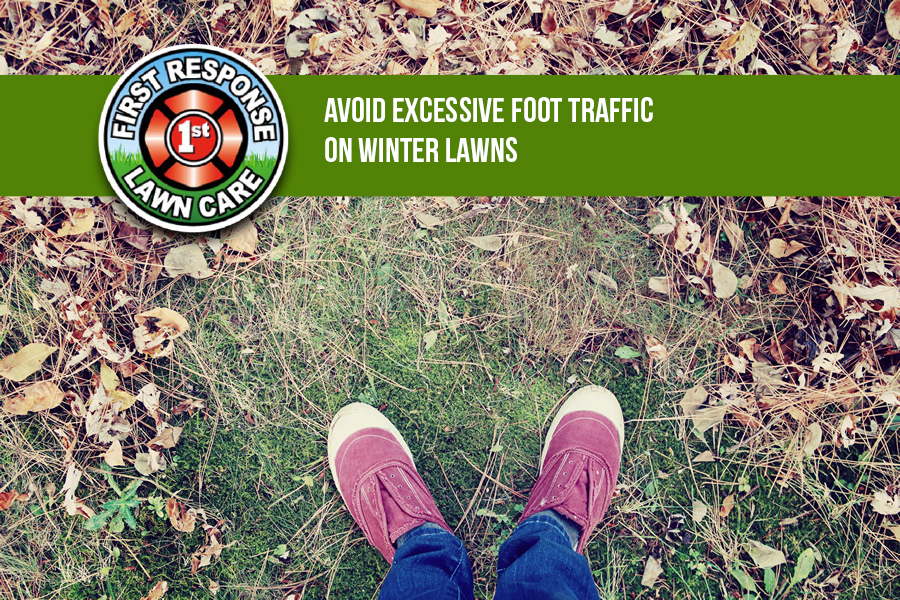
by admin | Mar 1, 2019 | Winterizing Your Lawn
It’s a good idea to avoid excessive foot traffic on winter lawns this time of year. When grass is brown and short, it’s easy to forget that too much foot traffic can actually damage it. Even though turf grasses are normally sturdy and resilient, too much wear and tear will make it hard for them to recover and worn walking paths may form.
Your lawn can easily become a convenient option over cement or walkways. To encourage guests from unnecessarily walking on your lawn, make sure that your sidewalks or driveways are kept clear in the winter months.
If you neglect winter lawn care
If you don’t take care of your lawn in the winter, no amount of spring lawn maintenance can totally reverse the neglect. Without care, your turfgrass roots are more likely to die, resulting in a dead lawn that’s not only unappealing but unhealthy for your lawn. When this happens, reseeding and replanting of turf grass will be necessary and nursing your lawn back to full health will take time and money.
If you’re worried about your lawn this winter, let a professional lawn specialist at First Response Lawn Care evaluate your lawn and assess its needs. Now is the perfect time to sign up for our 7 step lawn care and weed control program that’ll keep your lawn healthy this winter and all year long. Contact us today for a complimentary quote and inspection of your property and we’ll get working to give your lawn the help it needs.

by admin | Feb 22, 2019 | Winterizing Your Lawn
Ahhhhh raking winter leaves, an age-old tradition that most could live without for sure. Back when I was young, there was no shortage of leaves in our neighborhood and they always seemed to float to our yard. It was a chore, but read on because we have good news!
First Response Lawn Care will rake up leaf debris in your yard and bag it for you! Your flowerbeds and other landscaped areas need clean up too during the Texas winter months.
Get your yard cleaned from all the existing leaf piles or keep those falling leaves under control with our expert rake and bag lawn service. Keep your lawn grass and landscapes healthy by removing debris that could cause disease or give rodents a place to hide. If you have a ton of leaves or you have a bed of leaves that get wet, then you have a chance of growing mold, a fungal disease that can attack your grass.
When you are ready to say goodbye to those leaves, Call us and we’ll rake and bag those for you.
Questions? Contact First Response Lawn Care specialists by clicking the link below to ask about our expert services.
Contact First Response Lawn Care Today!
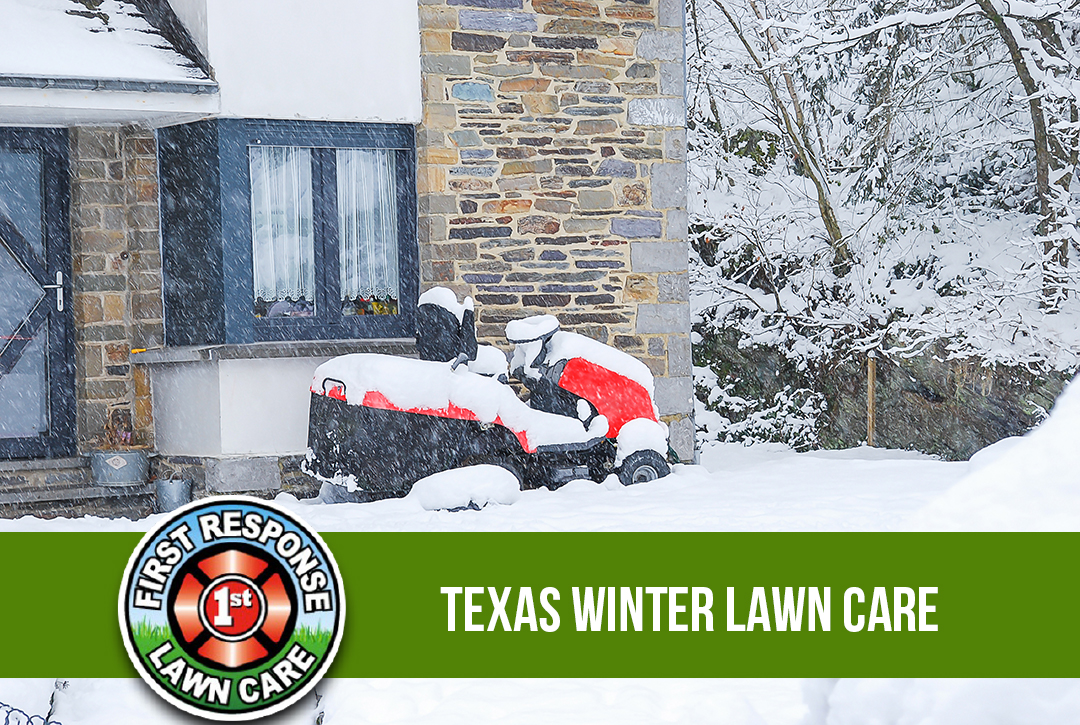
by admin | Feb 8, 2019 | Winterizing Your Lawn
Texas winter lawn care can be challenging. With its rain and freezing temperatures that can affect the lawn and will require the grass to be replaced if too much damage occurs. Winter in Texas may not be as long or severe as other states, but it can get cold. Homeowners must prepare their lawns for the cold bursts so that they are healthy and strong and ready for growing season.
Texas Winter Lawn Care Guide
Wondering how much work you need to put into your lawn in winter? The truth is, you don’t need to devote every moment to your lawn. But you want to pay it some attention if you want it to be green in the spring!
Clear Any Leaves and Debris
The debris and leaves can block out the sunlight, which can kill your grass. It is advisable to remove dead leaves on your yard so that you don’t wake up to a brown lawn come spring. Also, make sure you clear any debris, such as sticks, leaves, or other rubbish during the winter. These things can interfere with the grass receiving the proper nutrients, moisture, and air.
Winter Watering
Since Texas rarely gets snow, you should still water your lawn in the winter, especially if it’s been a couple of weeks without rain. Watering first thing in the morning is best because there is less evaporation and the water has a better chance of drying before night time, reducing instances of lawn diseases.
Know When to Apply Fertilizer
Fertilization is the most common way to make sure your lawn stays green and lush. The best time to apply fertilizer is right before the first freeze. Winter fertilization will give your lawn an increased amount of density and will allow it to fight off winter weeds.
Plant Winter Grasses
People in Texas often think of rye grass when they think of a winter grass. Planting rye grass will make your lawn look lusher and fuller as it grows in with your current grass.
Watch Your Weeds
Weeds can still be prevalent in the winter, so be sure that you pay close attention. You will improve the way your grass will grow when the spring comes around by actively removing weeds in the winter.
Luckily for our customers, we have the experience, the right tools and stock all the chemicals necessary to keep it looking its best so you don’t have to. Call us at (214) 701-7622 to talk to our friendly staff about your lawn care needs today! Or click the link below to check out our service offerings.
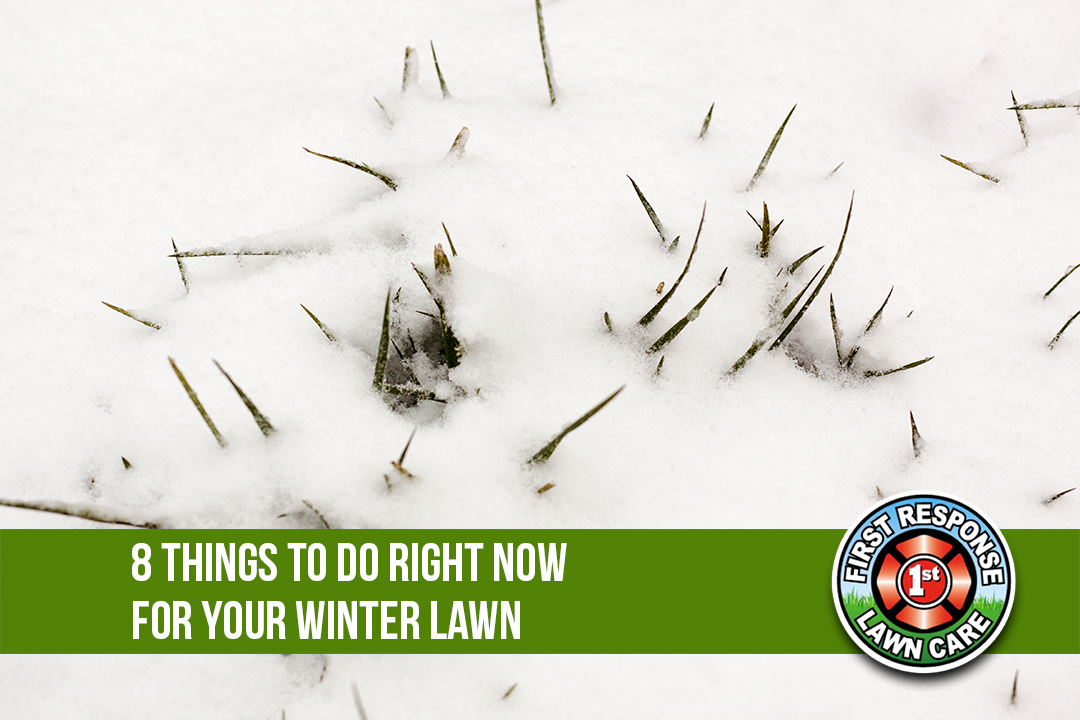
by admin | Jan 24, 2019 | Fertilize Treatments Rockwall, Gardening Tips, Lawn Aeration Rockwall, Lawn Care Royse City, overseeding ryegrass rockwall, Pre emergent Service Fate TX, Shrub Trimming Caddo Mills, Weed Control Fate, Weed Control Royse City, Winterizing, Winterizing Your Lawn
Here are 8 Things To Do Right Now For Your Winter Lawn. Texas’s warm humid climate and rich soil, is ideal for plant life. Gardens here show evidence of that.
With the first official day of Spring still over a month away, your attention may be focused mostly indoors. Even in the cold winter months, however, our lawns and gardens have specific needs. What may look dead and brown but is teeming with life just underneath the surface.
In order to reduce pests and ensure that your plants and grasses will thrive as the weather warms up, your Texas winter gardening regimen should include these essential steps.
TIPS FOR SUCCESSFUL TEXAS WINTER GARDENING.
Apply Pre-emergents
Now is the time to apply your pre-emergent on lawns and grasses to prevent the germination of weed seeds. The window of opportunity is open right now. Corn gluten meal is a great organic approach, but other herbicides can be purchased at your local nursery or home improvement store. Pre-emergent is a small step that yields BIG dividends in spring and summer.
Fertilize
If you haven’t done so already, fertilize all established trees and shrubs (except azaleas and camellias), and feed perennial bulbs. This can be done simultaneously with the pre-emergent. Your compost pile is perfect for this use, or check with your local garden center for recommendations.
Watch the weather
Historically, the coldest days of the year fall in the month of February. This does not come as great news to those of us yearning for the warmer weather, but gardeners should be on watch for a potential freeze all the way into the month of March. Make sure to water the roots well, and cover plants if temperatures fall below 32 degrees.
Pruning
This is the best time to prune shrubs, trees, and roses, but wait to prune spring flowering trees until after they bloom. Crepe Myrtles are the exception to this rule. Experts advise that crepe myrtles should never be pruned or can be pruned very gently.
Mowing
Mow your lawn once this month. This will allow the sun to reach the roots.
Clean up
Rake any fallen leaves, for the same reason. Grass roots need sunlight to germinate and begin the new growth cycle. Be sure to remove all debris and other encumbrances to growth. These leaves and other lawn debris can be put into the compost bin for later use as fertilizer.
Weeding
Dig weeds out by hand. There may only be a few, but soon they will become legion. Tackle the small job now, to avoid a larger one later.
Plant bulbs
Now is the time to plant later blooming bulbs and tubers such as dahlias, elephant ears, caladiums, and calla lilies. This is also the perfect time to plant strawberries.
Yes, it is cold outside. But if you want to have a beautiful landscape when spring comes, the time to begin is now.
Questions? Contact First Response Lawn Care by clicking the link below to ask about our expert services in all these areas!
Contact First Response Lawn Care Today!
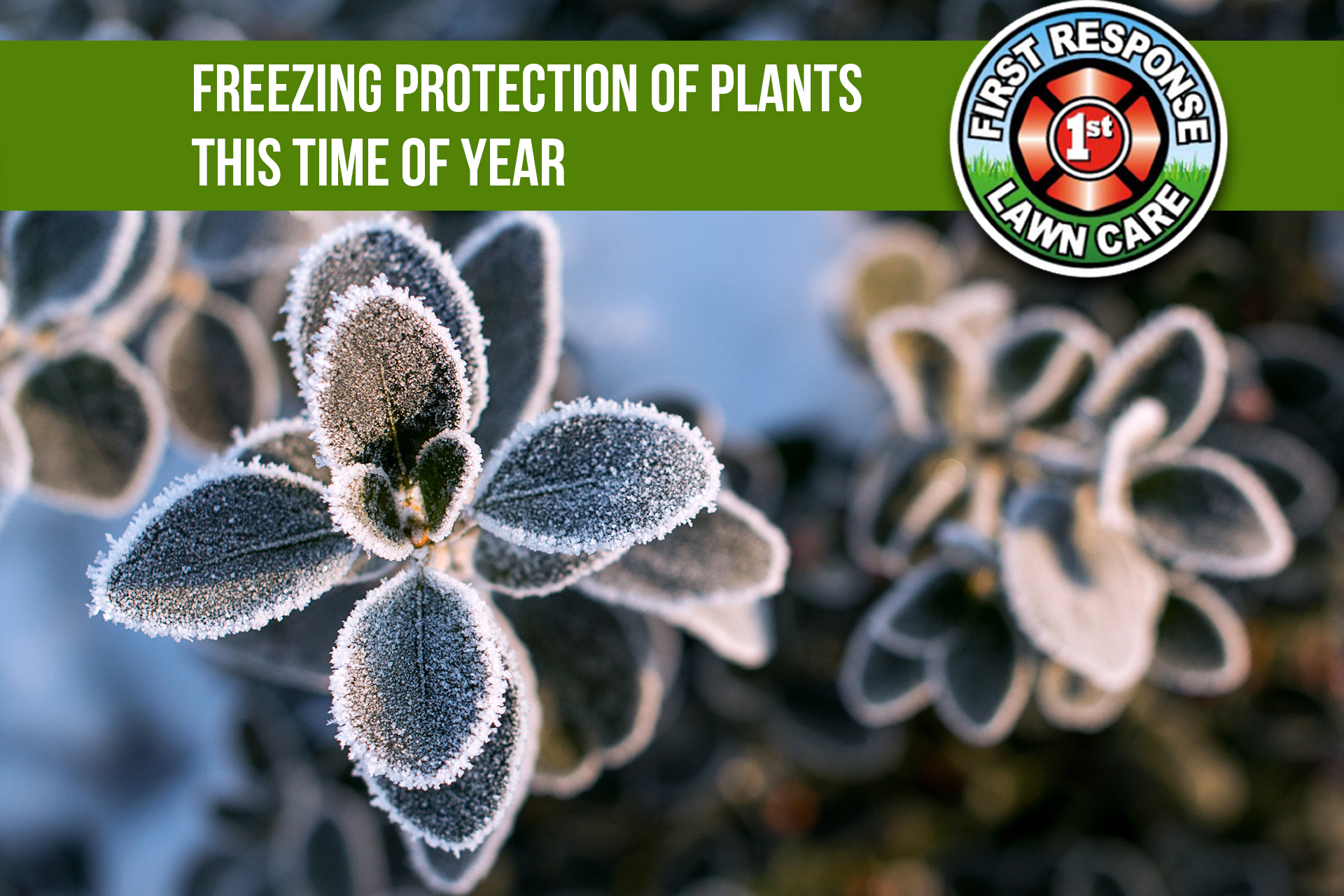
by admin | Jan 18, 2019 | Lawn Care Royse City, Winterizing, Winterizing Your Lawn
Winter is upon us and freezing protection of plants this time of year should be a concern for light snowfall seasons. One day it’s 60° and mild, the next 30°F with snow on the ground. You know what they say about Texas, “If you don’t like the weather, stick around because it will change by tomorrow”.
Frost, freezing and root damage are cause for concern in January. When frost is predicted, you can prepare for it. It’s also a good idea to periodically check the temperature at ground level near your plants to see how cold it is for them and whether or not you need to take precautions.
The primary concern being frost and light snow right now means that there are several things you might want to think about this month.
- If you’re going to cover up your plants before a frost, do so before sunset. If you wait until darkness falls, most of the stored heat in your garden will have dissipated.
- No matter what type of cover you use, make sure that it extends down to the soil on each side.
- Do not leave any openings for warmth to escape. If you can, it’s also helpful to use stakes to keep material, especially plastic, from touching the plant itself.
- In the morning, after frost has thawed, remove covers. Not doing so could cause the plant to come out of dormancy and start growing which makes more susceptible to frost damage in the future.
A few ideas for items you can use to cover plants:
- bed sheets or blankets
- drop cloths
- an inverted flower pot or bucket
- milk jugs with the bottom cut out
- frost cloths (These can protect some plants to temperatures as low as 20°F.)
- garden blankets from your local hardware store
Remember that covers don’t have to be costly to be effective and a little bit of caution goes a long way in protecting your plants against winter weather.
Contact First Response Lawn Care Today! and ask about our expert advice and services.






